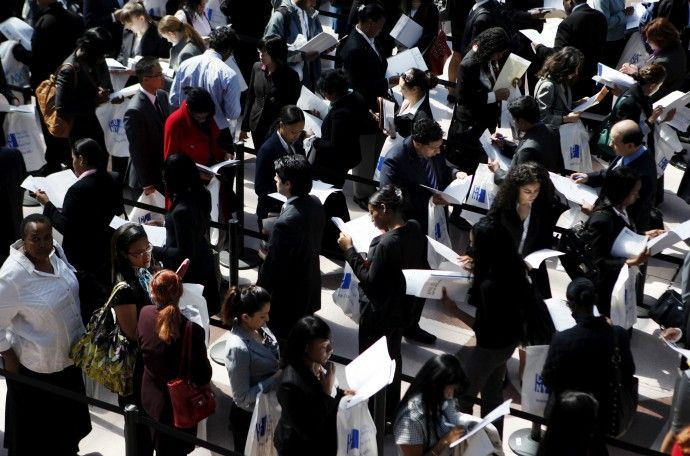Jobs data shocks to the down side, what happened to the mini-rebound?

What happened to the mini-rebound that started with the previous way-better-than-expected non-farm payrolls report?
While it would be premature to declare this mini-rebound -- or more precisely an acceleration in the pace of economic recovery -- to be over, November's shockingly bad jobs data puts a serious dent in that story.
Non-farm payrolls for November rose 39,000 versus the expected gain of 150,000. The private sector added 50,000 jobs while economists expected a gain of 160,000. The unemployment rate also edged up to 9.8 percent.
Furthermore, the no gain in average hourly earnings just as inflation pressures continue to build is disappointing, said Peter Boockvar, equity strategist at Miller Tabak.
Douglas Borthwick, at Stamford, Connecticut-based Faros Trading, said no one expected the jobs number would be this poor.
Indeed, in Bloomberg's survey, the lowest forecast for private payrolls gain was 115,000, made by Stone & McCarthy Research Associates. Meanwhile, MF Global was the most optimistic with a forecast of 200,000.
Why did no one expect the data to be this bad?
The markets [and economists, too] have gotten very excited over the past few weeks on the improving data, said Boockvar.
In fact, October's non-farm payrolls gain surged to 172,000, recent weekly initial jobs claims stayed relatively low, ADP's private non-farm payrolls (released Wednesday) showed a gain of 93,000 for November, the ISM surveys were upbeat, and various reports on consumer spending were better-than-expected.
Perhaps the only warning was a report from consultants Challenger, Gray & Christmas, which showed planned job cuts in November surged 28 percent to 48,711, the highest level since March.
Economists and market participants -- even highly competent ones -- continue to be confounded by the economy.
In early October, Jan Hatzius, Goldman Sachs' chief U.S. economist, said the U.S. economy will either be fairly bad or very bad in the next six to nine months. Fairly bad means a growth rate of 1.5 percent to 2 percent and very bad means a double-dip recession.
Now, he said the U.S. growth outlook has brightened significantly in recent weeks and recent data reveal a firmer trend in domestic final demand and suggest that it will be sustained via improvements in net hiring and credit availability. As a result, he raised his GDP growth forecast to 2.7 percent for 2011.
Why has the economy improved recently? (Or, what explains people's belief that it has improved?)
Haztius said his best explanation was the slowing of private-sector deleveraging.
There are other explanations, too.
Perhaps the Federal Reserve's second round of quantitative easing, through either boosting asset prices or exports, is helping. Another explanation is that a gridlocked Congress is better for the economy than a Congress controlled by Democrats. Still, a fourth explanation is that fears over a crash in China and the specter of a global trade war have been dispelled.
Or, it could be that the economy is indeed recovering, but jobs just aren't coming back. Economists have coined the term jobless recovery to describe this phenomenon.
However, jobless recovery is possibly an oxymoron in this case because the U.S. labor market remains arguably the most important factor that determines if the economy will grow faster than the sluggish pace of 2 percent per year due to its influence on consumer spending.
Whatever the case, monthly non-farm payrolls gain of 39,000 is dreary and much higher numbers are needed to accelerate economic growth.
Email Hao Li at hao.li@ibtimes.com
© Copyright IBTimes 2024. All rights reserved.





















